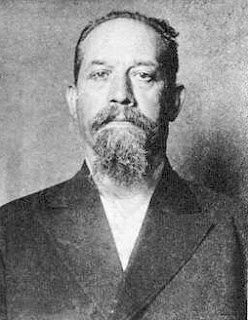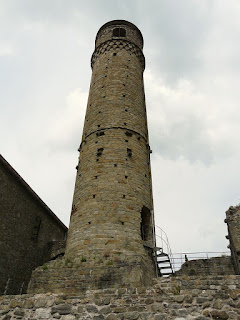Victims of massacre made saints
 |
| Details from a painting in Naples Cathedral that depicts the mass beheading of the 813 so-called Martyrs of Otranto by Ottoman invaders in 1480 |
Legend has it that these men - 813 in total from the age of 15 upwards - were the only male survivors after Otranto, a port city some 35km (22 miles) southeast of Lecce, was captured by the Ottomans at the end of a 15-day siege.
According to some accounts, a total of 12,000 people were killed and 5,000 mainly women and children were enslaved, including victims from the territories of the Salentine peninsula around the city.
The 813 were supposedly offered clemency in return for their conversion to Islam but all refused, taking their lead from a tailor called Antonio Primaldi, who is said to have proclaimed: "Now it is time for us to fight to save our souls for the Lord. And since he died on the cross for us, it is fitting that we should die for him."
 |
| The church of Santa Maria dei Martiri now stands on the hill where the executions are said to have taken place |
Otranto was recaptured the following year by Alfonso of Aragon, a condottiero who would later be crowned King of Naples, supported by soldiers from the army of King Matthias Corvinus of Hungary.
The remains of the beheaded men were then collected and their skulls placed in a reliquary in the city's cathedral, the Basilica di Santa Maria Annunziata.
From 1485, some of the martyrs' remains were transferred to Naples and placed under the altar of Our Lady of the Rosary in the church of Santa Caterina a Formiello, the altar that commemorated the final Christian victory over the Ottomans at Lepanto in 1571.
Other relics can be found in Bovino, near the border of Apulia and Campania, at several locations in the Salento peninsula, and also in Naples, Venice and Spain.
 |
| The chapel in the Basilica di Santa Maria Annunziata in Otranto, which contained the skulls of the victims |
The martyrs were canonised on May 12, 2013 by Pope Francis, shortly after Pope Benedict XVI had resigned.
The story has become controversial recently with a number of modern historians casting doubt on the circumstances surrounding the massacre, raising questions about whether their canonisation was justified.
Among the most convincing evidence has been put forward by Daniele Palma, a scientist from Calimera, a town on the Salento peninsula, with a fascination for the history of his homeland.
Palma questioned whether a massacre on religious grounds was likely, given that the Ottoman Empire encompassed many countries with different religions with no particular history of persecution.
| Daniele Palma's book "The Authentic Story of Otranto in the War against the Turks" |
Based on a trove of coded diplomatic letters held in the state archive of Modena, in Emilia-Romagna, dated during the 1480s, when the Duke of Ferrara was married to the daughter of the King of Naples, Palma believes that the massacre was probably the conclusion of a failed attempt to extract ransom payments from the families of the victims.
Palma found that the Turks had a practice of taking captives from the Salento coast and agreeing to return them to their families in exchange for 300 ducati.
The diplomatic letters that Palma decoded described bank transfers and payment negotiations for freeing various captives in the months following the siege of Otranto.
The men who were killed were likely to have been the ones whose families were too poor to secure their release, in which case the massacre was not an act of religious martyrdom and should not have been hailed as such by the Church.
 |
| The ruins of the Castello Aragonese in Otranto |
Otranto, a town of whitewashed houses nestling around a natural harbour, has become a main tourist destination in Apulia, not least for its nightlife during the summer months. Built around its castle, it was a larger town of considerable prestige before the Ottomans arrived. It never really recovered from the destruction wreaked upon it. Nowadays, it offers a leisurely pace of life and translucent seas in a picturesque location. A variety of musical and theatrical events are held in Otranto throughout the summer, usually centred around the castle, including a jazz festival in late July and the annual commemoration of the 800 Martyrs, which takes place on August 13–15. The scene of the massacre is now occupied by the church of Santa Maria dei Martiri on Colle della Minerva. The town's Castello Aragonese, the ruins of which include a walkway with panoramic views, was built some years after the massacre.
 |
| The Chiesa Madre di Calimera, the town in the Grecia Salentina area of Salento. home to Daniele Palma |
Calimera, where the scientist and historian Daniele Palma lived, is a small town of 7,296 inhabitants in the Grecìa Salentina area of the Salento peninsula, between Gallipoli and Otranto. Unusually, the inhabitants of Calimera speak Griko, a Greek dialect, in addition to Italian. Among things to see is the Chiesa Madre di Calimera, dedicated to the patron Saint Brizio, which dates back to 1689. It is located in Piazza del Sole in the centre of the town.
More reading:
The birth in 1480 of Lucrezia Borgia, the scheming beauty who married for political advantage and was widowed twice
Venice's war against the Ottoman Empire
The Arab conquest of Sicily
Also on this day:
1742: The birth of the future Pope Pius VII
1984: The birth of footballer Giorgio Chiellini
1988: The death of car marker Enzo Ferrari
Home



















